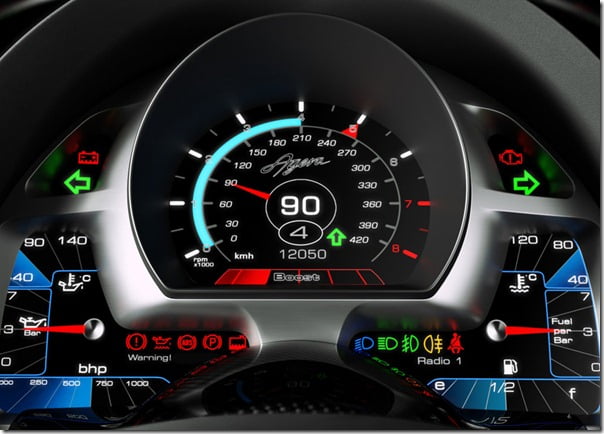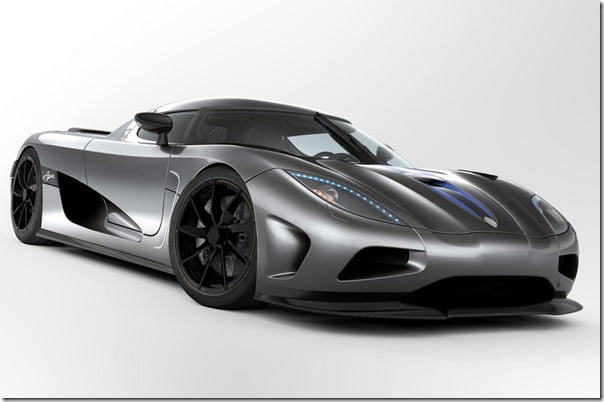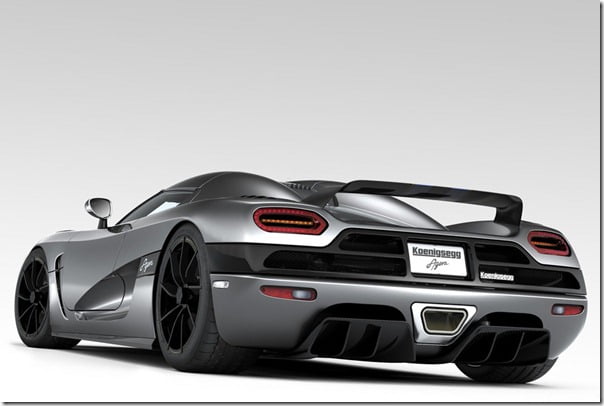With almost every exotic car manufacturer like Bentley, Bugatti and Ferrari heading towards the flourishing Indian Automobile market, which global major would leave the opportunity to show its potential in front of the Indian buyers. Koenigsegg, a Swedish supercar manufacturer is all geared up to launch its latest supercar into the Indian market.
Koenigsegg Agera is one of the fastest, most expensive and amazingly beautiful car ever built by a brand. Agera, the Swedish verb “to Act”, has been chosen as the name for this latest creation as it symbolizes a very important behavior, when it comes to what they at Koenigsegg do.
The pictures explain the beauty and engineering of the car very well and is an eye candy.
Specifications & Features Of Koenigsegg Agera
Performance
Power output: 910 hp at 6850 rpm – redline @ 7250 rpm
Torque: over 1000 Nm from 2680 to 6170 rpm
Max Torque: 1100 Nm at 5100 rpm
Acceleration: 0-100 km/h (0-62 mph) 3.1 seconds
0-200 km/h 8.9 sec, 0-200-0 km/h 13.7 sec
Top Speed: 390+ km/h (245+ mph) (estimated)
Braking distance: 30.5m (100-0 km/h)
Lateral G-force: 1.6 G
Fuel consumption
Highway travel: 12,5 l/100km, Combined: l6/100km
Weight-to-power ratio: 1.42 kg/hp
Weight distribution: 45% front, 55% rear
Emission levels: Euro IV
Aerodynamics
Cd. 0,35 Frontal area 1.885 m2
Total Down force at 250 km/h: 300 kg
Flat underside of chassis. Venturi tunnels at rear of chassis/body.
Chassis
Carbon fiber with aluminium honeycomb and integrated fuel tanks for optimal weight distribution and safety.
Monocoque torsional rigidity: 58,000 nm/degree.
Weight including tanks: 72 kg.
Front and rear suspension: Double wishbones, two-way adjustable VPS gas-hydraulic shock absorbers, pushrod operated.
Electronically adjustable ride height.
Front: Cro-Mo subframe, with integrated crash members.
Rear: Semi-stressed engine and gearbox with support struts, for
Needle bearings and o-ringed wishbone bushings optimal rigidity and no engine inertia movements.
Fully machined aircraft aluminum uprights, with SKF LeMans specification 150mm angle contact ball bearings.
GKN hollow/gun-drilled driveshafts.
Koenigsegg Z-style progressive and lightweight anti-roll bars front and rear.
Engine
Koenigsegg aluminum 4,7L V8, 4 valves per cylinder, double overhead camshafts
Compression: 8.9:1
Sequential, multipoint fuel injection.
Twin turbo superchargers
1.5 bar boost pressure.
Dry sump lubrication.
Carbon fiber intake manifold with optimized intake tracts.
Patented response charge system for optimal engine response.
Tig-welded ceramic coated inconell exhaust system manifold with merge collector.
Weight: 173 kg
Transmission
Specially developed transversal transmission with paddle-shift.
Torque sensitive limited slip differential or optional electronic differential
Clutch: Dual Plate, Ø 240 mm
Steering
Rack and pinion power assisted steering. 2.7 turns lock-to-lock.
Turning circle: 11 meters. TRW electro-hydraulic power-assisted.
Brakes
Front brakes: Ventilated ceramic discs Ø 392 mm, 36 mm wide. 6-piston calipers. Power-assisted.
Rear brakes: Ventilated ceramic discs Ø 380 mm, 34 mm wide. 6-piston calipers. Power-assisted.
Traction Control
F1-style for optimal performance with 5 different handling modes.
Wheels
Koenigsegg forged Vortex generating aluminium wheels with centre locking
Front: 19” x 9.5”
Rear: 20” x 12.5”
Tyres
Michelin
Unidirectional with asymmetric tread pattern
Front: 255/35 – 19” (Y)
Rear: 335/30 – 20” (Y)
Body
Two-door, two seater with removable hardtop stowable under the front hood lid. Body made from pre-impregnated carbon fiber/kevlar and lightweight sandwich reinforcements. Carbon vents over wheels




